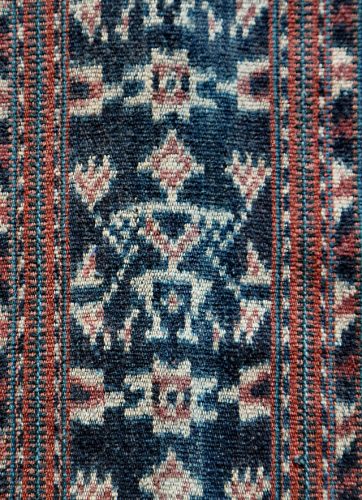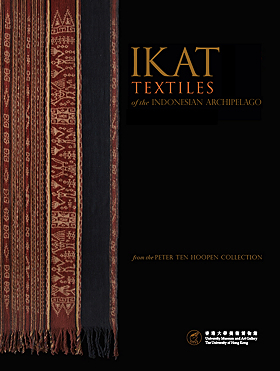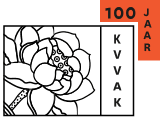
Het verzamelen van Indonesische ikat weefsels en Dayak-amuletten: Hoe ging het vroeger, hoe kan er in de toekomst nog verzameld worden?
Op 13 oktober organiseert de KVVAK een thema-middag met lezingen, boekpresentaties en een interview over belangrijke collecties van- en recente publicaties over Ikat en over amuletten van de Dayak.
Programma
13:45 Inloop en registratie
14:00 Openingswoord door Renée Steenbergen
14:10 Lezing door prof. Raymond Corbey nav zijn boek over Amuletten van de Dayak.
14:50 Koffie- en theepauze
15:10 Lezing Steven G. Alpert over het verzamelen van ikat
15:40 Interview Renée Steenbergen met Peter ten Hoopen, verzamelaar van ikat
16:10 Presentatie van het boek over zijn collectie door de uitgever (Hongkong University Press)
Tijdens de pauze en na het programma kan door de leden het boek over Ikats van Peter ten Hoopen en het boek van Raymond Corbey over Amuletten van de Dayak met korting worden aangeschaft.
Locatie
Auditorium van het Rijksmuseum Amsterdam
Raymond Corbey: Bekeren en verzamelen in Nederlands Oost-Indië
Missionarisen en zendelingen verzamelden in Oost-Indië tienduizenden “afgodsbeelden” en andere etnografica. Deze vonden hun weg naar Europese musea, missie- en zendingstentoonstellingen, galeristen en verzamelaars. Daarnaast werden talloze rituele objecten in missie- of zendingscontext vernietigd – vaak echter op initiatief van de mensen ter plekke zelf. Hoe complex wat er precies gebeurde was zal blijken uit een aantal voorbeelden uit verschillende regio’s van de kolonie.
Please note: the talk will be in Dutch, the slides in English.
Raymond Corbey, a philosopher and anthropologist, holds a chair in both Philosophy of Science and Anthropology in the Faculty of Archaeology of Leiden University.
Most of his research deals with human cognition, sociality, and cultural behaviour in an evolutionary perspective. A major focus here is the analysis of “domain assumptions” (implicit ontologies) guiding research in various anthropological disciplines, in particular cultural anthropology and evolutionary anthropology.

Peter ten Hoopen
Peter ten Hoopen began collecting ikat textiles from the Indonesian archipelago in the late-1970s, first attracted by their shimmering, strangely unsteady patterns suggestive of altered states, a world of dreams and visions. This awakening of interest fortuitously coincided with the ‘golden age’ of ikat research which generated several of the field’s inspiring classics—and with opportunities to travel to ikat-producing islands. His interest deepened as he discovered that the textiles were deeply meaningful both socially and spiritually, speaking of origin and belonging, and of connections with gods, ancestors and the spirit world. Becoming aware of the astounding diversity of regional styles, and of the precipitous decline of ikat as a vital aspect of the islands’ cultures, in 1980 he began work on a collection that eventually would encompass the entire archipelago: fifty different ikat weaving regions, each with their own particular style and cultural role.
Ten Hoopen’s credo became ‘collect the culture, not the piece’. When faced with collapsing traditions, the most crucial part of conservation is not the preservation of emblematic examples, however imperative, but rather the preservation of knowledge, which is so much more perishable than objects. He then began documenting his textiles with an intense level of detail, and sharing this crucial information with the world through his Pusaka Collection website, which quickly became the premier on-line reference tool for the subject.
The realisation that no comparable reference work existed in print triggered ten Hoopen’s ambition to create such a volume, which led to a partnership with the University Museum and Art Gallery, University of Hong Kong, on the 2017 exhibition ‘Fibres of Life’ and to the initial stages of the present work—Ikat Textiles of the Indonesian Archipelago. It is hoped that this book—enriched by the contributions of a dozen regional experts, several fellow collectors, curators and photographers, and detailing ikat regions and aspects never before covered—will stimulate the collecting of ikat from across the Indonesian archipelago, both private and institutional, and inspire further research into this vanishing art.

